BRK 770MBX Handleiding
BRK
Rookmelder
770MBX
Bekijk gratis de handleiding van BRK 770MBX (2 pagina’s), behorend tot de categorie Rookmelder. Deze gids werd als nuttig beoordeeld door 5 mensen en kreeg gemiddeld 4.8 sterren uit 3 reviews. Heb je een vraag over BRK 770MBX of wil je andere gebruikers van dit product iets vragen? Stel een vraag
Pagina 1/2

SMOKE ALARMS
& HEAT ALARMS
$ The maximum interconnect wiring length is 250 metres. The maximum num-
ber of alarms interconnected together is 12. BRK smoke alarms should not be con-
nected to any model produced by another manufacturer.
The location of the alarms must comply with the applicable building codes and the
advice in section C: WHERE TO LOCATE below.
#$$
#../20*7-
8:;=:/*,.68=7<270*7-;.:2.;*5*:6;
1. Use either of the methods of in-
stallation shown in Fig1 and 2.
When selecting cable for con-
necting interlinked smoke alarms
the interlink wire should be
treated as live.
The installation method shown in
Fig 1 is suitable for a plaster-
board or similar ceiling where ac-
cess to the void behind it is
available and suitable to mount
the junction box.
2. Connect the brown wire to the
brown (live) in the house wiring
and the blue wire to the blue (neu-
tral). NO CONNECTION SHOULD
BE MADE TO THE MAINS ELEC-
TRICITY SUPPLY EARTH TERMI-
NAL. TERMINATE HOUSE
WIRING EARTH IN SPARE CON-
NECTOR.
3. For multiple alarm installations
use a “three core and earth” style
cable between all the alarms to be interconnected and connect the third core
of that cable to the white wire from the smoke alarm. DO NOT use the earth
wire for the interconnect line. This must be treated as live, i.e. insulated and
sheathed. If the alarm is not going to be interconnected, cap the unused
wires.
4. Remove the baseplate from the back of the alarm by twisting anti-clockwise
as far as it will go. (about 12 mm). Detach the locking pin.
650MBX, 670MBX and 680MBX Detach battery door screw from the base
plate. Open the battery door on the back of the alarm, connect the battery,
close the door and secure with the screw provided before fitting the alarm to
the baseplate. Test the alarm using the test button.
5. Attach the flat side of the mounting plate and tighten screws to fit snugly
against the pattress or junction box and ceiling or wall.
6. Bring the power connector through the centre opening of the plate.
7. Plug the lead into the rear of the alarm.
8. Place the alarm on the baseplate by lining up arrows on the baseplate and the
alarm rim and twist clockwise to fasten.
To secure the alarm to the baseplate, insert the locking pin (removed from the
base in 5 above) into the ‘T’ shaped slot located above the arrow on the rim of
the alarm.
LOCKING PINS / KEYS UST BE FITTED. DO NOT ATTEMPT TO REMOVE THE
ALARM FROM THE BASEPLATE WITHOUT FIRST REMOVING THEM.
8:#.:2.;*5*:6;;=9952.-27<1.*7-;.:2.;?2<1
#-8,4270+*;.
1. Connect the brown (live) in the house wiring to connector Land the house blue
wire (Neutral) to connector N.
NO CONNECTION SHOULD BE MADE TO THE MAINS ELECTRICITY
SUPPLY EARTH TERMINAL. TERMINATE HOUSE WIRING EARTH IN SPARE
CONNECTOR MARKED E. See Fig 2
2. For multiple alarm installations use a “three core and earth” style cable
between all the alarms to be interconnected and connect the third core of that
cable to connector marked I. DO NOT use the earth wire for the interconnect
line. This must be treated as live, i.e. insulated and sheathed.
3. Locate the molded arrow on the side of the base and smoke alarm see fig 3.
Position the smoke alarm just below the base with both arrows in the same
orientation and locate the alarm onto the base by gently applying pressure
until the alarm ‘clicks’ into place.
OWNERS
MANUAL
Sprue Safety Products Ltd.
Unit 6, Carter Court
Davy Way
Waterwells Business Park
Quedgeley
Gloucester
GL2 2DE
United Kingdom
COVERS • Simple Fitting Instructions
• Location Guide
• User Information
• Basic Fire Safety Tips
• Simple Maintenance Instructions
"$$ #"
"$$#'"#%
M A I N S P O W E R E D
When installing this alarm for use by others,
please leave this manual or a copy with the
end user.
EARTH
BLACK or GREY (INTERLINK)
BLUE (NEUTRAL)
BROWN (LIVE)
WHITE
BROWN
BLUE
BASEPLATE
INSTALLATION USING JUNCTION BOX
ALARM
JUNCTION BOX
BATTERY
ACCESS
DOOR
Fig 1.
#
OPTICAL SMOKE ALARMS
"(
("
IONISATION SMOKE ALARMS
"(
("
HEAT ALARMS
"(
("
220-240VAC ( )
MAINS POWERED ALARMS
CLASS II APPARATUS
2502-B0018 RevA
#"%#
((*7-(
• Check battery has been fitted correctly.
• Check alarm is not beeping.
• Test alarm before switching on the electricity supply.
All Alarms:
• Check the green light is on (behind the front grill).
• Check the red light flashes every 45 seconds or so.
• When testing linked alarms check that they all interconnect within 10 second
%#$$
'" Wiring should be installed by a qualified electrician in accordance with
BS7671. Permanent connection to the fixed wiring of the building should be made in
a suitable junction box. This alarm must not be exposed to dripping or splashing.
Connect the alarm as late as possible in an installation, particularly in new build, to
avoid contamination. Remove the dust cover before applying power.
$ For detailed guidance on the siting of this alarm refer to section C of this
handbook.
"$$ The circuit used to power the alarm must be a 24 hour voltage circuit
that cannot be turned off by a switch. BS5839 Part 6 states that: -
For mains powered alarms, each with an integral standby supply (Grade D), the mains
electricity supply should take the form of either:
a) an independent circuit at the dwelling’s main circuit board, in which case no other
electrical equipment should be connected to this circuit (other than a dedicated
monitoring device installed to indicate failure of the mains electricity supply to the
alarms); or
b) a separately electrically protected, regularly used local lighting circuit.
For mains powered alarms, with no standby supply (Grade E), the mains electricity
supply may only take the form of an independent circuit as per a) above. If it is neces-
sary to use an RCD for protection, it should operate independently of any RCD pro-
tection for circuits supplying sockets or portable equipment.
All interconnected alarms should be installed on a single final circuit.
4. Switch on the mains electricity
supply.
5. Check that the green light is
on and that the red light is
flashing every
45 seconds or so. The lights
are located behind the grille
on the front of the
alarm.
6. Press and hold the test button
until the alarm sounds. NOTE:
On the 670 and
650 series, pressing this but-
ton places the alarm in pause mode.
#)#$#"$
"
Test each alarm in the system
checking that all other alarms in
the system are triggered within
10 seconds.
'"
Do not attempt to test the alarm
with flame heat or smoke, the re-
sults may be misleading and may
damage the alarm.
The dust cover must be removed
as late as possible before com-
missioning. This will reduce the chances of the alarm being contaminated by building
dust etc.
Remove the alarm from the system before testing the wiring with high voltage insula-
tion testing equipment otherwise this will damage the alarm and will invalidate the war-
ranty.
'"$$
1. As a minimum smoke alarms should be located between sleeping areas and poten-
tial sources of fire such as living rooms and kitchens. In single storey homes with
one sleeping area a smoke alarm should be installed in the hallway as close as pos-
sible to the living accommodation. To ensure audibility in the bedrooms it may be
necessary to install more than one smoke alarm, particularly if the hallway is more
than 15m long. In single storey homes with two separate sleeping areas, a minimum
of two smoke alarms is required, one outside each sleeping area. In multilevel or
split level homes as a minimum a smoke alarm should be installed on the ground
floor between the staircase and any rooms in which a fire might start and on each
storey in circulation areas which form part of the escape route (normally hallways
and landings).
$ Heat alarms should not be used in escape routes instead of smoke alarms.
They should only be used in the applications listed below in addition to smoke
alarms and should always be interconnected to smoke alarms.
2. Additional alarms should be installed in bedrooms in anticipation of fires originating
there, caused by faulty wiring, lights, appliances, smokers or other hazards.
3. For best protection, smoke alarms should be installed in every room in your home,
apart from those listed in the ‘LOCATIONS TO AVOID’ section. Heat alarms should
be used in kitchens, boiler rooms, laundry rooms, garages and such like where
smoke alarms would be unsuitable. All alarms must be interconnected.
4. Install smoke alarms in circulation areas at a distance no greater than 7.5m from the
farthest wall, no greater than 7.5m from a door to any room in which a fire might
start and no greater than 7.5m from the next smoke alarm.
5. When heat alarms are installed in a room, they should be at a distance no greater
than 5.3m from the farthest wall no greater that 5.3m from a door to any room in
which a fire might start and no greater than 5.3m from the next heat or smoke alarm.
6. As it is impossible to predict the source of a fire the best location for an alarm is the
centre of the room or hallway. If it is necessary to locate the smoke alarm on a wall
always locate the detection element of the alarm 150mm to 300mm (6 to 12 inches)
below the ceiling and the bottom of the alarm above the level of doors and other
openings.
$.*<*5*:6;;18=5-78<+.?*5568=7<.-.
7. In rooms with simple sloped, peaked or gabled ceilings install smoke alarms 900mm
(3 feet) from the highest point of the ceiling. ‘Dead air’ at the peak of the ceiling may
prevent smoke from reaching the alarm in time to provide an early warning.
8. Closed doors and other obstructions will interfere with the path of smoke and heat
Fig 2.
Fig 3.
Live = Brown
Neutral = Blue
Interconnect =
Grey or Black

*5;.5*:6;
Abnormal air conditions may cause the highly sensitive alarm to give a ‘false’ alarm. DO
NOT DISCONNECT THE ALARM. If no fire is apparent, ventilate the room and/or oper-
ate the alarm pause (If fitted).
'" IF THERE IS ANY QUESTION AS TO THE CAUSE OF AN ALARM, ALWAYS
ASSUME THAT IT IS DUE TO AN ACTUAL FIRE AND FOLLOW YOU FIRE EMER-
GENCY PLANS. Do not assume the alarm is a nuisance alarm and activate alarm pause
(if fitted).
Dust can have an adverse effect. Vacuum as recommended above.
Do not paint the unit.
Other factors such as nicotine contamination may also adversely affect the alarm.
"*-28*,<2>.87<.7<;
Ionisation type smoke alarms utilise a tiny amount of radioactive material, 0.9 microcuries
(30 kilobequerels) of Americium 241, to detect smoke. This material is in the form of a
sealed source and represents no hazard whatsoever to anyone installing or using the
smoke alarm. Any stray particles would be unable to “penetrate the dead layer of skin
and thus do not constitute an external hazard”. (Radiation Protection Guidance for Scien-
tists and Physicians). All BRK® ionisation smoke alarms have been rigorously tested by
the National Radiological Protection Board to ensure absolute safety.
2;98;*5
This product, the batteries and other accessories must not be disposed of as unsorted
municipal waste and must be collected separately at the end of the products life. Con-
tact your local authority for information about collection points in your area.
262<.-0=*:*7<..
BRK (“the BRK Brands Europe Ltd products”) as distributed by Sprue Safety Products
Ltd (“the Distributor”), are guaranteed by the Distributor to be free from defects in materi-
als and workmanship under normal use and service for a period of five years from the
date of purchase.
Neither the Distributor nor BRK Brands Europe Ltd make any guarantees for this prod-
uct. No agent, representative, dealer or employee from the Distributor or BRK Brands Eu-
rope Ltd has the authority to increase or alter the obligations or limitations of the
Guarantee.
The Distributor’s obligation of this guarantee shall be limited to the repair or replacement
of any part of the smoke or heat alarm which is found to be defective in materials or
workmanship under normal use and service during the five year period commencing
from date of purchase. The Distributor shall not be obligated to repair or replace smoke
or heat alarms which are found to be in need of repair because of damage, unreasonable
use, modifications or alterations occurring after the date of purchase. This warranty does
not affect a customer’s statutory rights in any way.
8?<88+<*270=*:*7<..;.:>2,.
If service is required, return the product to your retailer. The Distributor makes no guar-
antee, express or implied, written or oral, including that of merchantability or fitness for
any particular purpose with respect to battery. YOUR ALARM IS NOT A SUBSTITUTE
FOR PROPERTY, DISABILITY OR OTHER INSURANCE OF ANY KIND. APPROPRIATE
COVERAGE IS YOUR RESPONSIBILITY. CONSULT YOUR AGENT. In the event of a
problem with your alarm or you have any questions concerning its use; care and service
please consult this manual.
If you require any further help or clarification please write to:
#9:=.#*/.<@ :8-=,<;<- %72<*:<.:8=:<*>@'*@
'*<.:?.55;=;27.;; *:4!=.-0.5.@58=,.;<.:%72<.-270-86
8:9187.8=:.59527.87A???+:4.5.,<:872,;.=
5.*;.78<.<1*<;9.,2/2,*<287;6*@+.;=+3.,<<8,1*70.
an alarm and may prevent occupants from hearing an alarm on the other side of a
closed door. Install sufficient alarms to compensate for closed doors and other ob-
stacles.
9. Your local fire brigade or insurance company may be able to give you further ad-
vice. Call them and ask. Further help and information may also be found in BS5839
Part 6 and the Fire Safety guidance given by the Department of Transport, Local
Government and the Regions (DTLR).
"$$ These smoke and heat alarms are intended primarily for use in sin-
gle-family occupancy private dwellings. For use in other applications the manufac-
turers advice should be sought. $#$&
$ locate alarms: -
1. In turbulent air from fans, heaters, doors, windows, etc.
2. In high humidity areas such as bathrooms and shower rooms or where the temper-
ature exceeds 39ºC (100ºF) or falls below 5ºC (40ºF)
3. At the peak of an ‘A’ frame ceiling – dead air at the top may prevent smoke and
heat from reaching the alarm to provide an early warning.
4. Less than 300mm (12 inches) from a wall when mounted on the ceiling.
5. In insect infested areas. Tiny insects may affect performance.
6. (Smoke alarms) in poorly ventilated kitchen or garage. Combustion particles from
cooking or car exhaust could trigger a nuisance alarm
7. In very dusty or dirty areas – dirt and excessive dust can impair the performance
of the alarm.
8. Within 300mm (12 inches) of a light fitting or room corners.
9. In locations that would make routine testing or maintenance hazardous. (e.g. over
a stairwell).
10. On poorly insulated walls or ceilings.
11. Near objects such as ceiling decorations that might impede the path of smoke or
heat to the alarm.
12. Within 1500mm (5 feet) of a fluorescent light fitting and keep wiring at least
1000mm (39 inches) from these fittings. Do not install alarms on circuits containing
fluorescent light fittings or dimmer switches.
Further help and information may be found in BS5839 Part 6
%#""$
.*<=:.;
• Operating Lights – A continuous green light indicates the alarm is receiving mains
power. The red light doubles as an alarm source indicator and flashes approxi-
mately every 45 seconds to confirm circuitry integrity.
• Alarm Source Indicator – Red light will flash every second in the unit originating the
alarm. Red lights on other alarms flash every 45 seconds.
• Alarm Pause (670 & 650 range only) – Silence your smoke alarm by momentarily
pressing the test button. Ideal when non-emergency smoke (e.g. cooking fumes)
cause nuisance alarms. Red light flashes every ten seconds to remind you that the
alarm has been silenced. Double beep indicates that the alarm has automatically
reset after approximately 10 minutes.
. :.9*:.-
Smoke and heat alarms properly installed and maintained are an essential part of a
good home fire safety programme. Review fire hazards and eliminate dangerous con-
ditions wherever possible. When fire strikes a prepared and practiced escape plan
could prove vital. Your local fire brigade may be willing to advise you. Call them and
ask. Consider and discuss the following safety hints:
• Ensure everyone is familiarized with the alarm signal.
• Always test doors with your hands before flinging them open. If they feel warm, fire
may be walled up behind them – leave closed and find another escape route.
• Don’t waste time collecting possessions. Rouse all occupants and leave the build-
ing; your life is more valuable.
• $%$#$)%$$$""%$
• Keep everyone in a set meeting place after your escape.
• If trapped inside, stay close to the floor, cover your mouth with cloth and conserve
breath while you crawl to safety.
• Keep all windows and doors closed except for escape purposes.
• Prepare and practice an escape plan before a fire starts.
Draw a floor plan. Have fire drills often. Practise your escape.
# $
Vacuum every six months to keep unit working efficiently by firstly turning off the
mains electricity supply and vacuuming through the vents using a soft brush attach-
ment. Keep the nozzle from touching the unit. SWITCH POWER BACK ON WHEN
YOU HAVE FINISHED.
Test the alarm once a week by: -
• Checking that the green light is on and that the red light is flashing every 45 seconds
or so. The lights are located behind the grille on the front of the alarm.
• Press and hold the test button until the alarm sounds. NOTE: Pressing this button on
alarms in the 670 and 650 series also places the alarm in pause mode.
(#(((
Change the battery with a new one when the alarm beeps every 45 seconds.
Turn off the mains electricity supply, remove locking key, rotate the alarm approxi-
mately 10mm anti-clockwise and remove the alarm from the ceiling. Unplug the alarm
from the mains supply. Remove the screw and prise open the battery compartment
door on the back of the alarm to replace the battery with one of the following: Duracell
MN1604, MX1604, Eveready PP3B PP3S, 6LF22 Gold Peak 1604A, 1604S. Close the
battery door refit the screw and re-assemble the alarm to the ceiling ensuring that the
mains plug is securely fitted. Test the alarm using the test button then turn on the
mains electricity supply. PLEASE NOTE: The alarm cannot be fitted to the baseplate
without a battery installed.
For 670,650 and 680 series units installed on a DS700 surface mounting base
(770, 750 and 780 series).
1. Turn off the power. Green LED should be off.
2. Using a small flat blade screwdriver gently flex the locking clips on the side of the
base away from the alarm.
3. Using your other hand, disconnect the alarm by gently pulling away from the base.
4. When alarm is removed, remove screw and open battery door on the rear of the
alarm. Replace battery with Duracell MN1604, MX1604, Eveready PP3S, 6LF22,
Gold Peak 1606A or 1604S. Close battery door and refit the screw.
5. Press the test button on the alarm to ensure correct operation be re-installing.
Locate the molded arrow on the side of the base and smoke alarm see fig 3. Posi-
tion the smoke alarm just below the base with both arrows in the same orientation
and locate the alarm onto the base by gently applying pressure until the alarm
‘clicks’ into place.
7. Restore mains power and ensure green LED lights and press the test button to con-
firm operation.
"""
Rechargeable Lithium batteries provide approximately 6 months back up power sup-
ply in the event of a mains supply failure. The alarm may beep every 45 seconds for a
few hours after a mains supply failure while the batteries re-charge.
High performance rechargeable capacitors provide a back up power supply in the
event of a mains supply failure. The alarm may beep every 45 seconds for a few hours
after installation or during/after a mains supply failure. In both of these events the
rechargeable capacitors will need to charge/re-charge when mains supply is restored.
$:8=+5.;188<270
Problems are indicated by four events: -
1. Alarm does not sound upon pressing the test button
2. Green light does not illuminate when mains power is on.
3. Red operating light remains steadily on, or off (i.e. does not flash every 45 seconds
when alarm is in standby).
4. Alarm emits a beep every 45 seconds when back up power supply should be fully
charged.
Try the following: -
1. Inspect the fuse in the power circuit to the alarm
2. Gently vacuum as detailed in ‘Simple Maintenance’.
3. For MBX models only, replace the battery.
4. Call a qualified electrician to inspect the house wiring and connections to the alarm.
If these procedures do not eliminate the problem. DO NOT ATTEMPT REPAIRS. In the
first instance contact the manufacturer for further advice.
If the alarm is still within warranty period and terms, return the unit with proof of pur-
chase to the distributor, indicating the nature of the problem. Units beyond warranty
cannot be economically repaired. For address see the bottom of this page.
Single storey,
one sleeping area
Dining
Room
Dining
Room
Living
Room
Living
Room
Living
Room
TV
Room
Kitchen
Kitchen Garage
Hall
Hall
Kitchen
Bedroom Bedroom Bedroom
Bedroom
Bedroom Bedroom
Bedroom
Bedroom
Smoke alarms for limited protection
Additional smoke alarms for better coverage
Heat alarms
Single storey,
two sleeping areas
Two storey
dwelling
BS5446-2:2003
Licence No: KM85855
BS EN 14604: 2005
Licence No: KM99052
680, 780 Range
650 & 670, 750 &
770 Range
0086-CPD-517190
EN 14604: 2005
# $#%#
650 & 670, 750 &
770 Range
680 & 780 series
Product specificaties
| Merk: | BRK |
| Categorie: | Rookmelder |
| Model: | 770MBX |
Heb je hulp nodig?
Als je hulp nodig hebt met BRK 770MBX stel dan hieronder een vraag en andere gebruikers zullen je antwoorden
Handleiding Rookmelder BRK

7 Juli 2023

10 Mei 2023

10 Mei 2023

10 Mei 2023

10 Mei 2023

20 April 2023

29 Maart 2023

24 Maart 2023

21 Februari 2023

7 Februari 2023
Handleiding Rookmelder
- Vivanco
- REV
- Qolsys
- Lanberg
- Somfy
- Pyle
- Hager
- SAVS
- Sygonix
- Alecto
- Bosch
- Gloria
- Inovonics
- Flamingo
- Olympia
Nieuwste handleidingen voor Rookmelder

27 Juli 2025
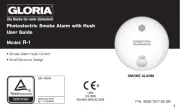
9 Juli 2025
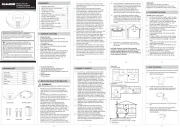
4 Juli 2025
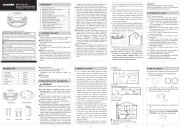
4 Juli 2025

1 Juli 2025
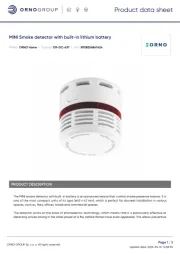
11 Juni 2025
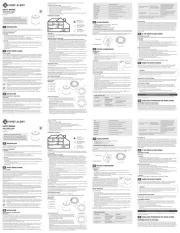
8 Juni 2025
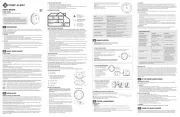
8 Juni 2025
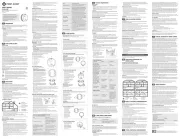
8 Juni 2025

30 Mei 2025